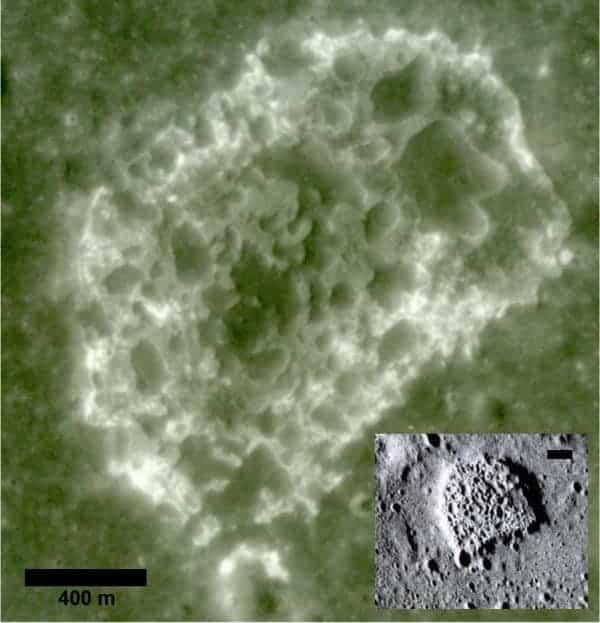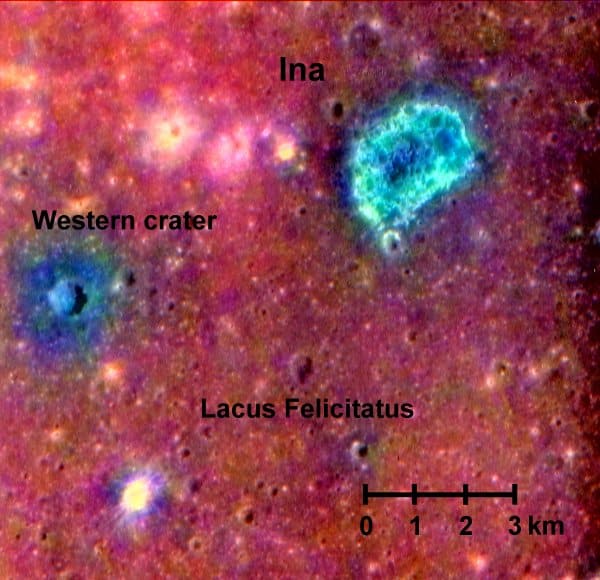The moon's surface is far more active than previously thought; according to researchers in the US, who claim that gases released from deep beneath the surface continue to shape the lunar landscape. This appears to defy conventional wisdom that the surface of the moon has been unaffected by internal processes for the past billion years (Nature 444 184).

Geologists Peter Schultz and Carlé Pieters of Rhode Island’s Brown University and Matthew Staid of the Planetary Science Institute in Arizona focused on a D-shaped area on the moon called the Ina structure, which was first discovered in images from the Apollo lunar missions of 1972. The Apollo images show that Ina contains unusually rough terrain that should have been smoothed out over the last billion years by the constant bombardment of space debris. The Apollo data also reveals that the region has very few meteor craters compared to other parts of the moon. These observations have led Schultz and colleagues to conclude that Ina is “exceedingly young” at several million years old. This is backed up by optical spectroscopy measurements made by the Clementine space probe in 1994, which show that Ina has a highly-reflective surface indicative of very recent formation.
Ina’s surface could be very young because it has been modified by periodic releases of gas from ancient faults within the moon’s surface, say the scientists. These explosive events blow off the lunar soil, obliterating meteor craters and exposing fresh and highly-reflective material.
The researchers believe that a relic of this gas may have already been detected by the Apollo missions, which found high levels of radioactive polonium near Ina. This means that radon gas was present in that region in the past 60 years, suggesting that outgassing is an ongoing process.
Schultz said that there are at least four other locations where outgassing could have disturbed the lunar surface. The upcoming Lunar Reconnaissance Orbiter, Chandrayan, and SELENE lunar missions (from the US, India and Japan respectively), should provide more information regarding the distribution of outgassing regions and the frequency of such events.




